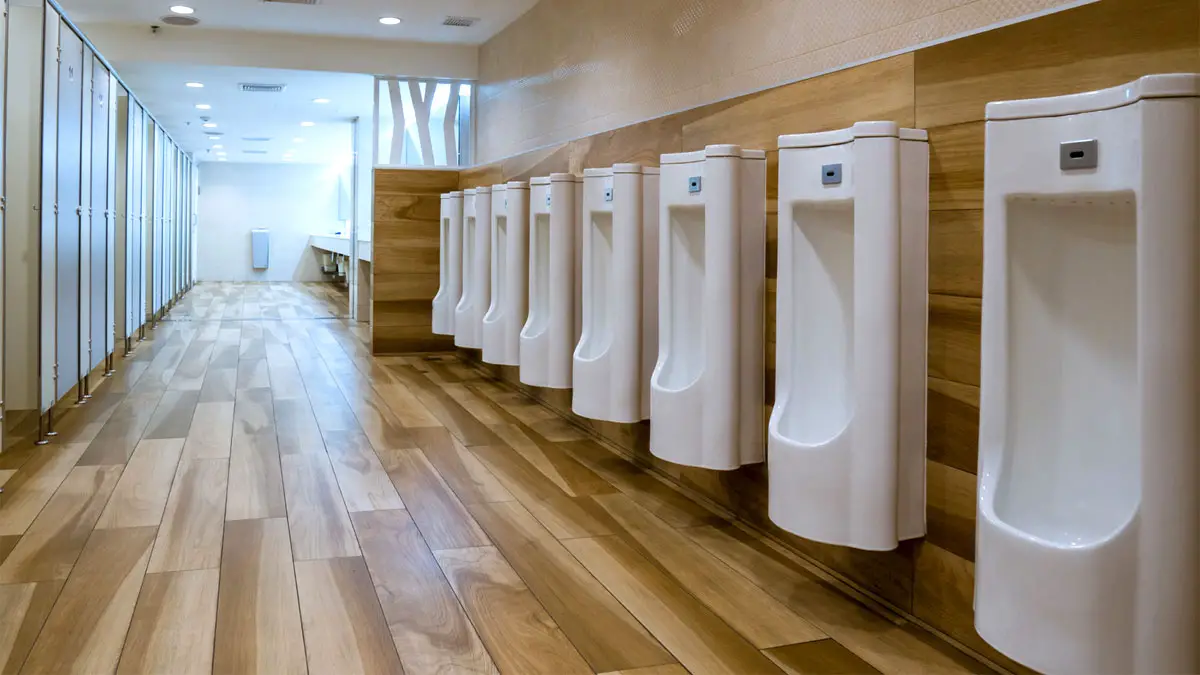Ever since the Roman emperor Commodus found immortality by inventing indoor plumbing, people have either been fascinated or horrified by toilets. While this list is about bathrooms, it’s not actually about the toilet. Instead, we’re going to be looking at their cousin, the urinal.
These liquid waste receptacles are most often found in men’s restrooms, and they’re surprisingly varied. So without further ado, let’s look at 13 types of urinals.
See Also: 11 Types of Mirrors
Types of Urinals
1. Automatic Flush Urinal
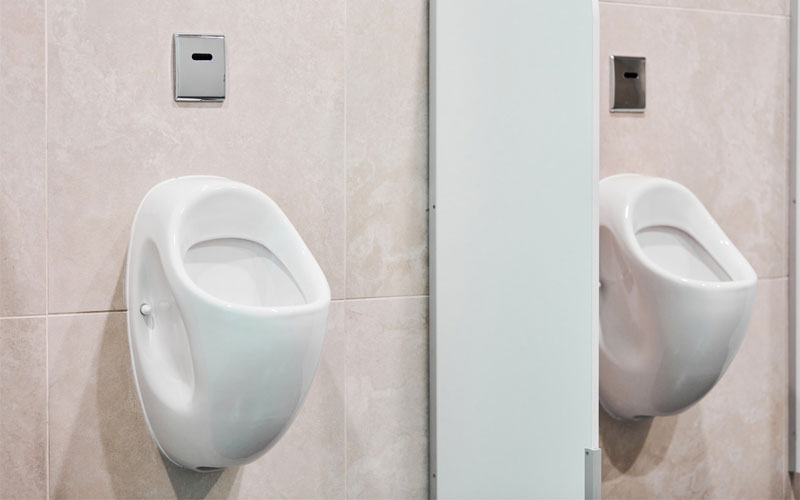
Modern restrooms are all about automation, and the urinal is no exception. Urinals equipped with an automatic flush system incorporate a sensor that can detect if someone’s in front of the urinal.
Earlier models sometimes misfired, flushing while someone shifted their weight or not detecting when the person walked away, so they often also had a manual flush option. However, newer models are far more accurate and most no longer have a flush handle.
In some cases, urinals with this type of system can save water, but the main draw is hygiene. As there’s no need to touch the urinal, there’s less risk of spreading germs or bacteria. It also means you never have to worry if the person in front of you will forget to flush.
2. Bowl Urinal
While not as common elsewhere, these dominate US restrooms. They can fit in relatively small spaces, allowing for more privacy even if a divider isn’t present. The bottom is curved like a bowl to guide urine into the drain, while the backs also tend to be recessed to help reduce splashing.
On their own, bowl urinals tend to be fairly inexpensive. However, when installing multiple ones (such as for a large venue), the price for individual plumbing can cause a sharp price increase. This is why they aren’t as popular in other countries where privacy isn’t as much of a concern.
See Also: 16 Different Kinds of Beer
3. Child Urinal
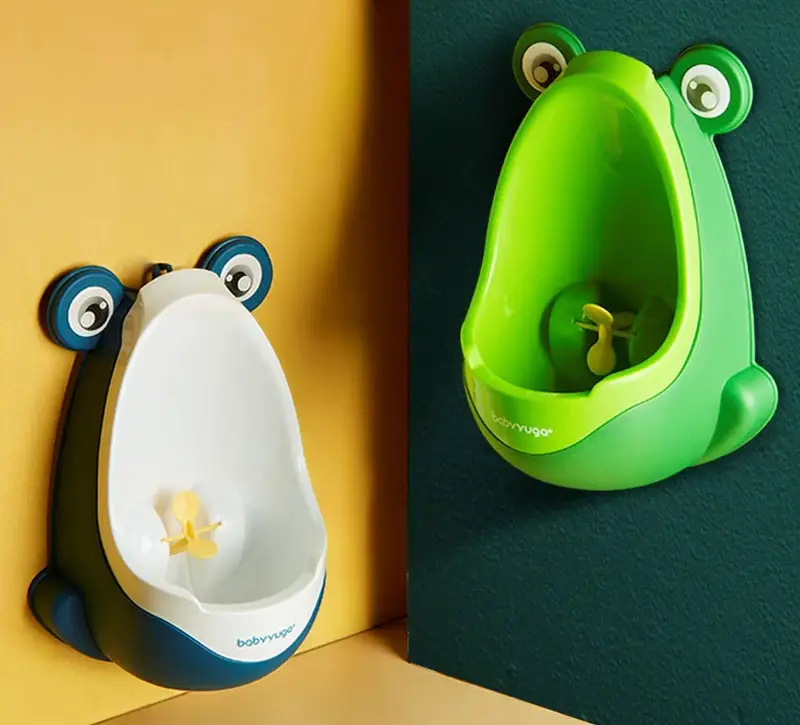
Have you ever wondered why people who hate golf will still gladly play miniature golf? This is the same trick child urinals use to encourage kids to aim. For example, imagine aiming so your pee causes a little paddle to spin.
Of course, there are now many adult urinals which have followed suit, such as the infamous Hillary Clinton urinals in Texas, but the child urinals tend to be more fun.
4. Flat Back Urinal
These small urinals are surprisingly lightweight, allowing them to be anchored to the wall with screws. While not as popular as stall urinals, the ability to save space has made these popular in venues where space is at a premium.
5. Corner Urinal
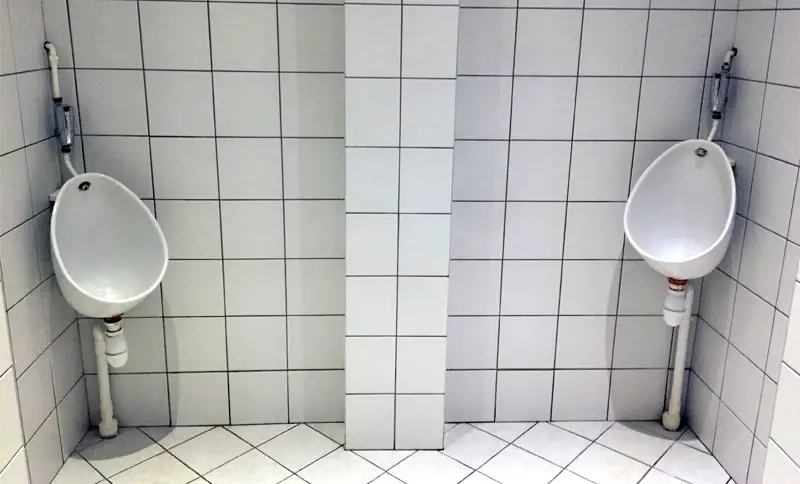
This is a flat back urinal that’s designed to – you guessed it – fit in a corner. This can be a huge space saver in certain situations, although it’s not as popular due to the way most restrooms are laid out.
6. Makeshift Urinal
Sometimes when you don’t have access to a restroom, you have to make your own. Referred to as “piss tubes” by the military, these are a disposable bottle with the bottom removed and a tube running from the bottle’s mouth into the ground, allowing urine to soak into the soil naturally.
7. Manual Flush Urinal
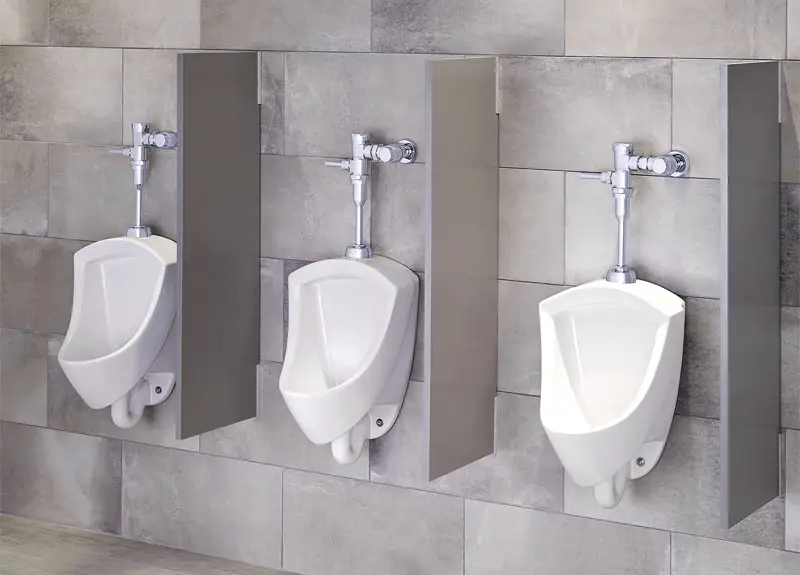
These are the classic (mostly) dependable urinals you can still find all over the place. Depending on the model, they can be flushed by pressing a button or pulling a lever. Many older models with automatic flush systems also have a manual option due to how unreliable the early sensors were.
Despite being antiquated and often accused of being less efficient, manual flush systems actually tend to save more water because there’s no risk of triggering a sensor or needing to flush again because you weren’t done (a risk when using timed flush systems).
Of course, you need to make physical contact with the button or lever to flush, meaning you will be picking up germs. This isn’t so bad if you wash right afterwards, but many don’t and the lever or button rarely gets cleaned.
Overall, these urinals will probably continue to be popular, since they rarely break down, don’t require a power source (such as a battery), and won’t flush until you’re ready.
8. Portable Urinal
The name might confuse you, but these are instantly recognizable. The most common name for them is a bedpan and they tend to be made of metal or plastic.
In the 1800s, these urinals were popular since houses often lacked full plumbing. Residents would then chuck the contents out into the street, which is one of the reasons it became good manners for a man to walk on the outside when with a woman on the sidewalk. We’ll let you imagine what often happened on your own.
Today, you’ll mostly find these urinals in hospitals or being used by those who are bedridden. They’re also sometimes used when travelling long distances, although this is less common if rest stops are available on the way. There are even female portable urinals now, which have a funnel shape that makes them easier to use.
9. Stall Urinal
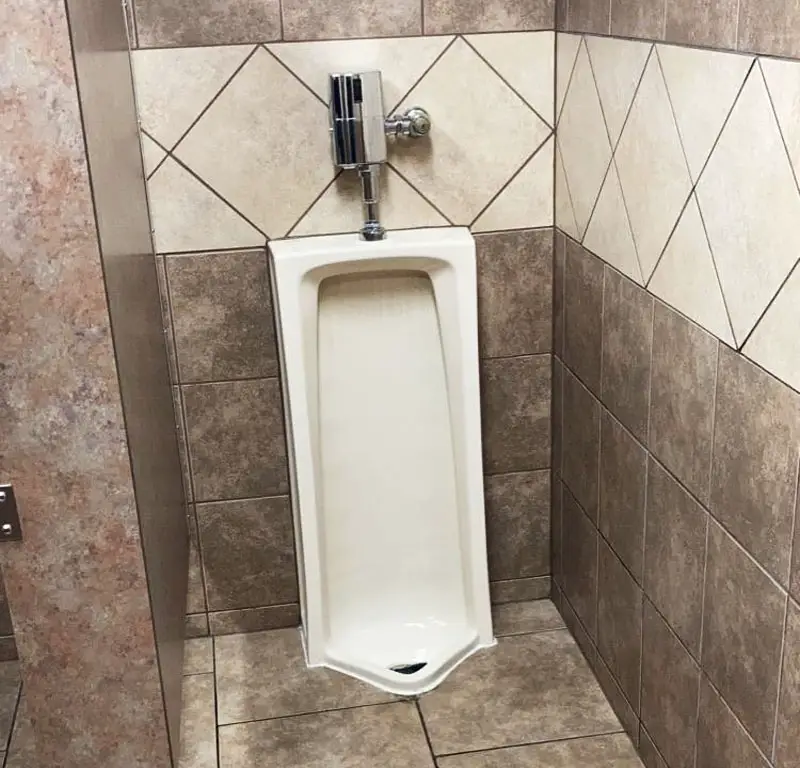
Chances are you’ve seen stall urinals before. These are large vertical urinals supported by either a flange (for the half-length ones) or the floor (for full-length).
Stall urinals tend to be some of the most common sights in US restrooms but aren’t as common in other countries.
10. Timed Flush Urinals
Oh, the bittersweet invention that is a timer! If you’re running a business prone to having slobs in your restrooms, a timed flush system might sound like a great idea.
However, they’re a poor choice for places where people tend to practice good hygiene. This is because there’s no way to manually flush the urinal and no visible sensor.
Instead, these urinals have an internal timer which automatically flushes the urinal at regular intervals. And yes, they do this even when nobody’s around. Timed flush urinals mean no physical contact at the cost of using extra water.
However, for more awkward devices such as trough urinals, they can be more effective than other systems.
11. Squatting Urinal
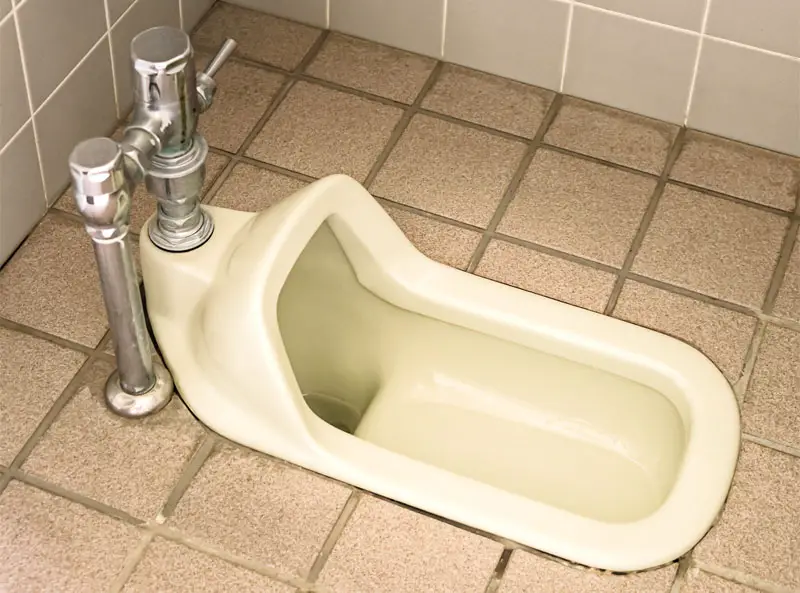
Ask any woman who’s been to Japan what it’s like to go to the bathroom, and she’ll tell you how bizarre the toilets are. That’s because Japan (and many other countries) have adopted squatting urinals. These come in many shapes and sizes, but the general concept is the same.
Since many women don’t know how to aim (or even know that it’s possible), these urinals are built in such a way that a woman can straddle it, squat down, and urinate without having to make contact.
The ones in Japan are so low they’re only slightly above the floor, allowing a woman to squat low enough that her urethra (usually) has an unobstructed trajectory.
The surface is designed to prevent splashing, which makes them even more popular among women once they get used to using one.
12. Waterless Urinal
Now these are truly an oddity. Sometimes referred to as a water-free urinal, the waterless urinal uses a cartridge system and requires less plumbing. The only times water is needed are during installation and occasional maintenance flushing.
As you pee, the urine passes through a special liquid seal in the cartridge to a trap. This seal prevents gasses (and the smells accompanying them) from escaping back into the restroom.
When the urine overflows the trap, gravity pulls it into the sewer plumbing. Some models will use liquid sealant without the cartridge but otherwise function the same.
While they’re still catching on, it’s believed a waterless urinal can save 35,000 gallons of water or more per year in public settings. They also require very basic maintenance, such as replacing the cartridge and doing a water flush to clean the unit (which only takes a couple gallons).
Between the water savings and flushless system, waterless urinals may well be the future kings of the restroom.
13. Trough Urinal
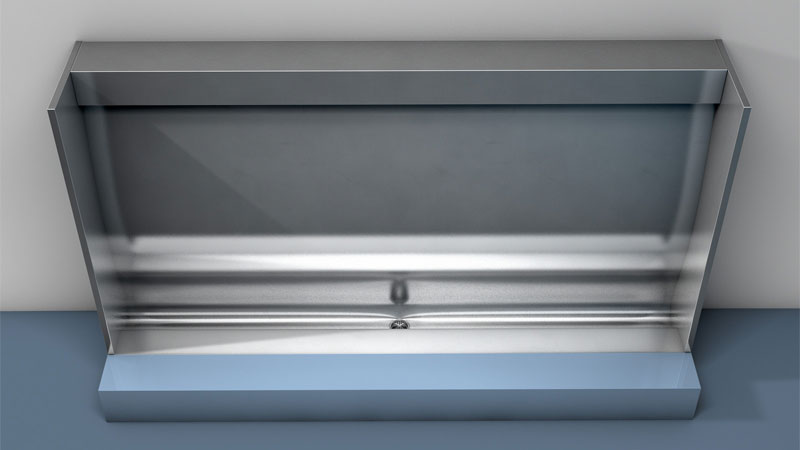
You don’t see these often in the US because there’s not much in the way of privacy. Instead, they’re a single, wide urinal that has a trough-like bottom and high back. Imagine a full-length stall urinal stretched sideways (and usually made of stainless steel), and you’re not far from these curious urine collectors.
Trough urinals are great when space is somewhat limited at certain points in the day and only require a single plumbing line. This makes them far more cost effective than multiple bowl urinals when you need to accommodate (a commode date?) a lot of people.
They can be found at concert outlets, festivals, campsites, stadiums, and other high-occupancy locations.
One other important thing to note is that this type of urinal is often considered outdated in many parts of the world, and the lack of privacy makes them less popular in the US to begin with.
For these reasons, it’s entirely possible that the trough urinal may become as rare as outhouses in the near future.

